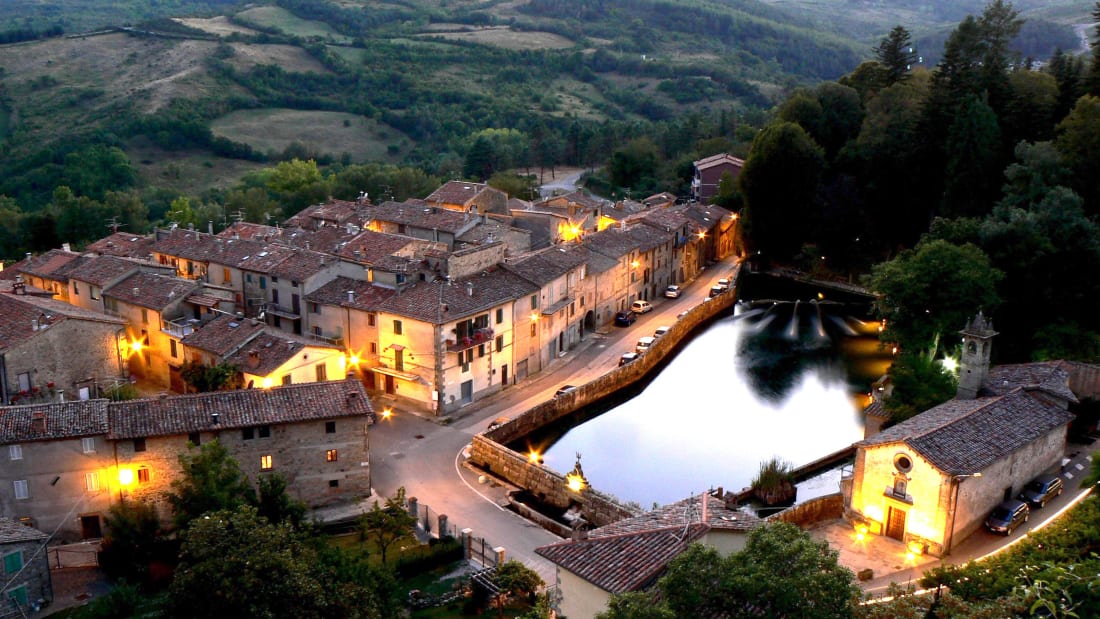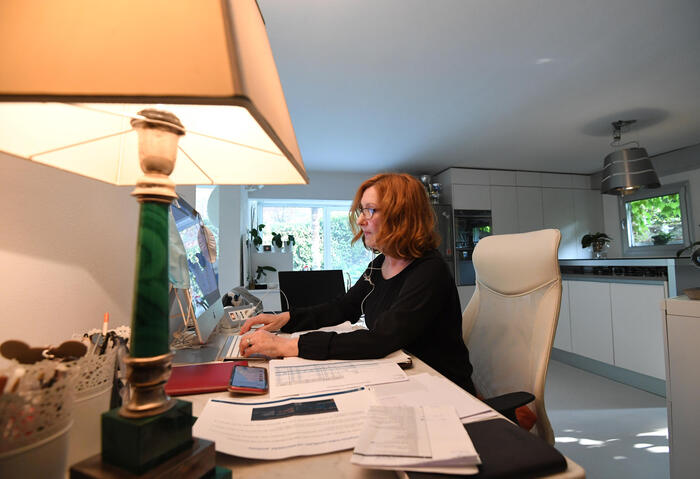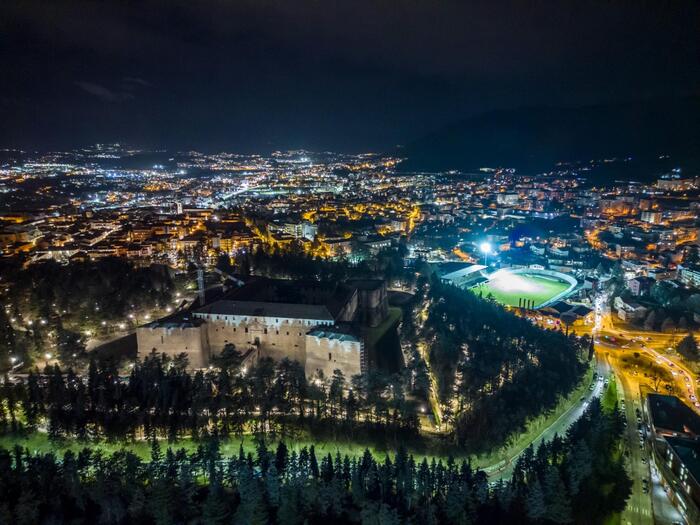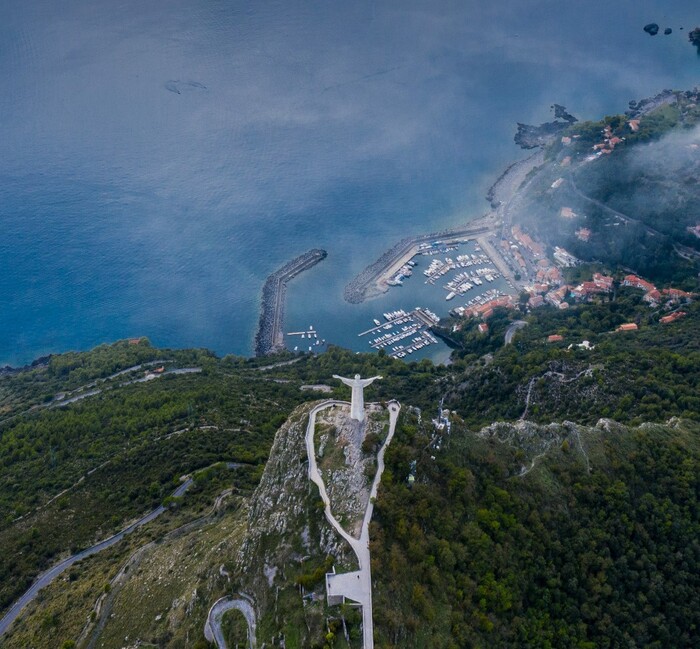Santa Fiora is located in the heart of Tuscany.
Photo: Comune Santa Fiora
(CNN) -
Remote working has become a possibility for many during the pandemic, which means that the office can now be from a kitchen table to a beach on the other side of the world, and even if moving to a picturesque city Italian could also be a factor on many people's wish lists, that outlook just got even better with two destinations offering to pay workers to move there.
In an attempt to attract outsiders, Santa Fiora in Tuscany and Rieti in Lazio will pay up to 50% of the rent for anyone who decides to move and telecommute long-term.
Rents are already relatively low, so that deal is potentially very attractive, but make no mistake, it's not about paid vacations.
Applicants must have an "active" job, even if they can do it in front of a laptop on a panoramic terrace overlooking the olive groves while sipping a glass of red wine.
It doesn't matter what you do for a living, as long as you're tech-savvy enough to do it from anywhere.
Although Italy is still slowly emerging from its latest pandemic wave, it hopes to properly reopen to travelers over the next several weeks, adding to the tantalizing prospect of a true Italian summer.
advertising
And while COVID-19 has hit Italy especially hard compared to some of its European neighbors, a silver lining has been that people have been relocating to previously unpopulated cities, breathing new life into previously declining areas they now offer. physical distancing and lower contagion rates.
So-called 'smart work towns' are flourishing in Italy as local authorities harness the potential to boost high-speed internet and establish equipped 'labs' for teleworkers.
Santa Fiora
The mayor of Santa Fiora hopes that good internet connections will attract remote workers.
Nestled in the heart of wild Tuscany, the medieval village of Santa Fiora is located in the Monte Amiata nature reserve and is close to the wonderful Val D'Orcia Valley, the wine paradise of Montepulciano and Siena.
Today the population has been reduced to just 2,500, but the mayor, Federico Balocchi, believes that technology and virtual work can revolutionize the future of his hometown.
Telecommuters who want to relocate and rent a home here in the Tuscan sun will receive up to 200 euros (US $ 240) or 50% of the total rent for long-term stays of between two and six months.
Local rents typically range from € 300 to € 500 a month, which means that anyone moving here could end up paying as little as € 100 a month.
To help outsiders find their ideal type of accommodation, be it a cozy stone farmhouse in the historic center or a small villa in the surrounding green hills, the city council has launched a website (https: // www. vivinpaese.it/) to advertise rentals along with a list of helpful services and contacts from plumbers, babysitters, doctors, electricians, and food delivery people to make newcomers instantly feel at home.
There are also links to local real estate agencies for a wider selection of homes.
But don't think you'll get paid to laze around eating delicious pasta dishes and touring Tuscany.
Balocchi wishes to emphasize that the rental voucher is not a partial vacation payment.
Prospective tenants must show that they will actually be working remotely.
"It is not aimed at occasional tourists, but at people who really want to experience our village life," he tells CNN.
“The goal is to incentivize people to move and work virtually from here.
We want Santa Fiora to become your flexible office.
Every time a young man goes to look for work in another place, a part of our town leaves ».
"This is just the first step in our smart town project, focused on connectivity and technology to attract new residents and businesses."
The town has just been wired with high-speed fiber Internet and "workstations" are being identified amid its narrow cobbled alleys and Renaissance palaces.
Beyond the broadband connection, the pace of life in Santa Fiora is slow, offering a stay away from the chaos of the city and the smog.
It is ideal for people who want to spend part of the year in a quiet and relaxing place surrounded by nature.
Local rentals usually range between 300 and 500 euros per month in Santa Fiora.
So what is the catch?
First, you must really be working remotely and demonstrate it through a detailed document of what exactly you do for a living, be it architecture, design, poetry, independent reporting, online cooking lessons or brokering for world peace. .
This should be submitted together with your application form.
People with a pension can move, but will not benefit from the coupon unless they continue to work as independent contractors, professionals, or online consultants.
Second, once you find somewhere in town, you will need to submit a rental voucher with the contract details and your new address.
The 200 euro monthly vouchers work as refunds that will be paid only after submitting the rent receipts to the mayor's office.
Visiting Santa Fiora as soon as travel around the world resumes could be a good way to get a feel for village life and personally search for your perfect abode.
Balocchi assures that the city's tourist office will be happy to help with all the paperwork and paperwork.
If you plan to travel to Spain now that the state of alarm is over, keep in mind that some key tourist destinations still have restrictions
Of course, the tenants are free to extend their stay beyond six months, albeit at their own expense, and the mayor hopes that some will fall in love with the village and stay forever.
And if you decide to invest in the local tourism sector, Santa Fiora is willing to give you up to 30,000 euros to open a B&B or remodel an old home to turn it into a hotel or hostel.
There is even a baby bonus of up to 1,500 euros (US $ 1,800) for each newborn if someone decides to settle down and have a child.
"It would be great if new families really settled in," says Balocchi.
Santa Fiora is located in the heart of Tuscany.
Photo: Comune Santa Fiora
“This place is perfect for remote workers who must balance work and children.
We have low rates for kindergarten, free school buses, and lots of activities for kids to breathe.
Once a mining center, Santa Fiora is an idyllic Tuscan hilltop town where nature and art blend seamlessly.
There are towers, fountains, panoramic squares overlooking the mountainous landscape, museums and works by Renaissance artists.
Crossed by the Fiora River, it is surrounded by chestnut forests and a network of streams, waterfalls and virgin springs.
There is a spectacular old fish pond surrounded by a lush garden of pine trees, magnolias and orchards surrounded by luxurious palaces and a castle.
The main outdoor activities include horseback riding, cycling and hiking on mountain trails.
Santa Fiora has a popular international music festival in summer and regular food fairs featuring local mushrooms, onions, and chestnuts.
You can find more information and details of the application here.
Rieti
Rieti, not far from Rome, also has rental offers for remote workers.
Photo: Scopri La Sabina
For those who prefer to be closer to Rome, the impressive Rieti has a similar offer but for a minimum of three months of stay.
Eclipsed by the fame and charm of the Eternal City, it is a hidden destination worth seeing.
Although Rieti has about 50,000 inhabitants and is one of the largest cities in the Lazio region, its population is not growing.
"We are a bit stuck," says Deputy Mayor Daniele Sinibaldi.
"Young people continue to flee to Rome in search of work, so we have embarked on a mission to attract remote workers who will make Rieti their smart office and revitalize our city."
Rieti's housing offer is even more attractive.
Rental vouchers could be extended beyond six months and a preliminary lease agreement is all the proof needed to get the ball rolling, says Sinibaldi.
Telecommuters are free to choose a property even in nearby rural districts where rents are lower compared to the city.
Finding a site can be more difficult as there is no city council website with properties available.
Applicants should contact online rental agencies or platforms directly (such as immobiliare.it; subito.it; casa.it).
Employees will need a letter from their boss to prove their teleworker status, but freelancers can simply provide a description of their job.
Sinibaldi is confident that telecommuting will revitalize the sleepy Rieti.
"The rents in the city range between 250 and 500 euros," he says.
“For 600 euros (US $ 730) you can have a whole little villa in the quiet countryside.
In addition, the voucher can be used throughout the entire territory of Rieti, including the rural villages of Sant'Elia, Cerchiara and the Terminillo ski resort, but we would love for people to move to the historic center.
The origins of Rieti are full of legend.
It was founded by the fierce Italic tribes of the Sabines who inhabited the wild hills and forests of the area, but were forced to bow the knee to ancient Rome after a series of bloody massacres.
PHOTOS |
Bisaccia, another Italian town that is selling houses for 1 euro
During Roman times, Rieti was a strategic post along the Via Salaria salt route, one of the main roads of the Empire.
Enclosed between protective medieval walls and turrets along the pristine Velino River, Rieti is known locally as "the Venice of fresh water" for its network of streams, ponds, springs and lush lake reserves.
It is a mix of medieval, renaissance, baroque and modern architecture where monumental squares, fortified walls and aristocratic palaces are connected by narrow picturesque alleys.
Standing on the majestic Roman bridge to admire the deep red sunsets that set the river on fire is a popular nighttime activity.
Since Roman times, Rieti claims to be the so-called Umbilicus Italiae, also known as the "navel of Italy," the exact geographic center of the country.
The supposed spot smack in the middle of the country is apparently embodied by a historic pool table located inside a small bar on the main square, where a round-shaped monument nicknamed 'la caciotta' ('the shape of cheese') marks the navel of Italy.
Fascinating treasures are hidden from view.
Strolling down Via Roma, the main shopping street, you would never guess that just below your feet runs another ancient Roman flyover from which the city grew and flourished.
The viaduct was built in the 3rd century BC to prevent flooding on the Via Salaria.
The underground city is made up of arches that are incorporated into noble residences.
Many houses in the historic center have Roman walls and secret passages that lead to underground chambers.
Local food specialties include Fregnacce alla reatina, a diamond-shaped pasta with a savory sauce of soft lard, celery, onion, diced tomatoes, salt, and chili.
Pizzicotti are 'pinched' gnocchi served with a spicy tomato, garlic and olive oil sauce.
The stracciatella are eggs cooked in beef broth, while the spaghetti alla carrettiera are made with seasoned pecorino cheese and chili.
InstaNewsTeleworking















